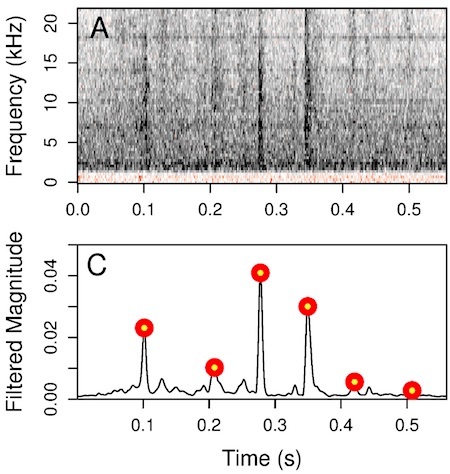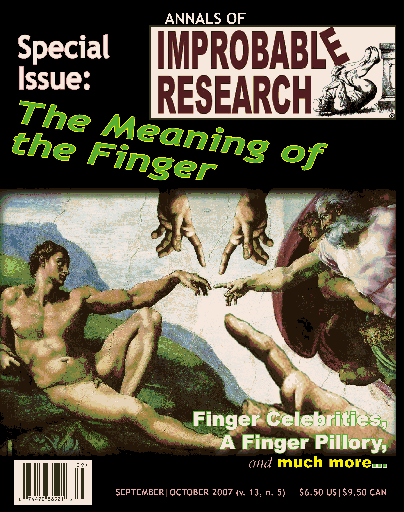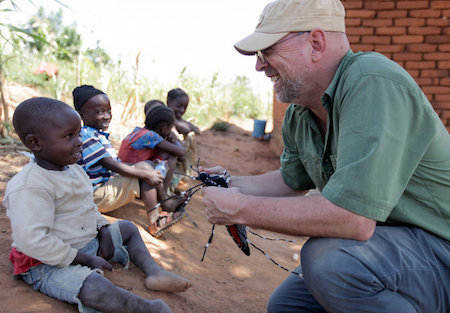Marc Abrahams's Blog, page 215
July 10, 2017
Is Silver Vine the new Catnip? (recent study)
Effective though Catnip (Nepeta cataria) might be – in causing cats to sniff, roll over, and undulate the skin on their back (amongst other things) – it only affects about 50% of cats. And usually has little or no impact on Tigers. A new study in BMC Veterinary Research, March 2017, compares Catnip with Silver Vine (Actinidia polygama) – or to be more specific, Silver Vine that has been parasitised by the gall midge Pseudasphondylia matatabi, producing fruit-galls.
The study found that not only was Silver Vine around 40% more likely to create an ‘intense’ response in cats – it has now been shown, for the first time, that it also dramatically affects Bobcats :
 [The photo shows an eight year old female bobcat holding a paper bag containing Silver Vine powder between her forelegs, while she is rolling around and giving it chin and cheek rubs.]
[The photo shows an eight year old female bobcat holding a paper bag containing Silver Vine powder between her forelegs, while she is rolling around and giving it chin and cheek rubs.]
The study contains this statement: “Unlike domestic cats, tigers were either not interested in silver vine or responded disapprovingly.”
Note: Although many of the active-ingredient chemicals have been identified and isolated, no-one has any idea why they affect felids in the ways they do.

July 8, 2017
Six Cups of Coffee Goes to Your Head, for Surgical Guidance [research study]
A special hat filled with six cups’ worth of ground coffee may make it easier for surgeons to succeed at some kinds of nose and throat surgery. This study presents the news:
“Coffee: the key to safer image-guided surgery—a granular jamming cap for non-invasive, rigid fixation of fiducial markers to the patient,” Patrick S. Wellborn [pictured here, not wearing a cap], Neal P. Dillon, Paul T. Russell, and Robert J. Webster, International Journal of Computer Assisted Radiology and Surgery, vol. 12, no. 6, 2017, pp. 1069-1077.
The authors, at Vanderbilt University, report: “Our granular jamming cap surrounds the head and conforms to the contours of the patient’s skull. When a vacuum is drawn, the device solidifies in a manner conceptually like a vacuum-packed bag of ground coffee, providing a rigid structure that can firmly hold fiducial markers to the patient’s skull…. We tested our new approach… Conclusion —The granular jamming cap concept increases the robustness and accuracy of image-guided sinus and skull base surgery by more firmly attaching fiducial markers to the patient’s skull.”

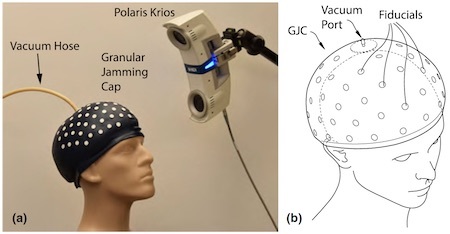
This short video gives a brief, graphic demonstration of how the thing works:
The hat itself is constructed along the same principles used to make an old-fashioned toy called Stretch Armstrong. The toy, shown in this 1994 TV commercial, used a substance other than coffee, though:

July 7, 2017
Automated Acoustic Detection of Mouse Scratching [research study]
Acoustic detection of mouse scratching has been automated at least once. This report tells about the mice involved, and about their scratching, and about the detection — done acoustically — of that scratching:
“Automated Acoustic Detection of Mouse Scratching,” Peter Elliott, Max G’Sell, Lindsey M. Snyder, Sarah E. Ross, and Valérie Ventura, PLoS ONE, vol. 12, no. 7, 2017, e0179662. The authors, at Carnegie Mellon University and the University of Pittsburgh, report:
“we propose a novel automated method for acoustic detection of mouse scratching. Using this approach, we show that chloroquine-induced scratching behavior in C57BL/6 mice can be quantified with reasonable accuracy… This report is the first method to apply supervised learning techniques to automate acoustic scratch detection…. Mouse scratching occurs in small sets of rapid swipes, which we refer to as scratch bouts. The goal of our procedure is to detect scratch bouts rather than individual scratches….though our results were collected from a single strain and small number of mice tested with a single pruritogen, it is likely that the approach will be broadly applicable to the audio detection of scratch.”

July 6, 2017
Blu-Tack® for researchers
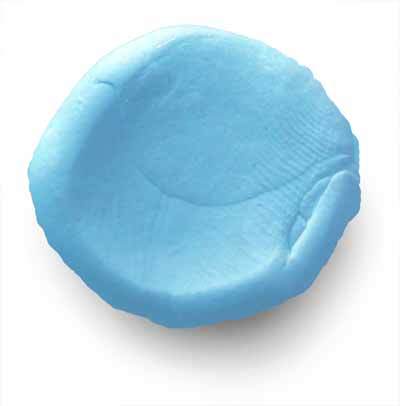 Blu-Tack®, say its manufacturers, is designed to hang posters, hold many ordinary household objects in place and temporarily stop leaks around the house. Since its launch c. 1969 researchers across the globe have found a plethora of alternative and imaginative applications for the substance, many of which have been carefully documented in the academic literature … Here are but a few examples of its uses :
Blu-Tack®, say its manufacturers, is designed to hang posters, hold many ordinary household objects in place and temporarily stop leaks around the house. Since its launch c. 1969 researchers across the globe have found a plethora of alternative and imaginative applications for the substance, many of which have been carefully documented in the academic literature … Here are but a few examples of its uses :
• As portable full stops (periods) to teach writing skills
• For removing foreign (bodily) objects
• Immobilizing roots of barley plants
• Blocking raingauge funnels for calibration
• Gas flow regulation in stout can widget testing
• Making artificial lesions for x ray imaging tests
• As a semiconducting paste to affix conductors for high voltage cable testing
• Finger immobilizing during fingerprint pore area assessment
• Making sense of the biochemistry of proteins
• As an effective sound-attenuating ear plug
• As a simple mass load for the eardrum in PET scans
• Making labyrinths for a hot ice computer
There are though (as with any substance) things that it just shouldn’t be used for : See:
• A novel method to remove an unusual intravesical foreign body (Blu-Tack™)
Notes:
[1] Our illustration is loosely inspired by the work of Martin Creed.
See: Work No. 79, Some Blu- Tack kneaded, rolled into a ball, and depressed against a wall, 1993.
[2] Can we clarify that Blu-Tack is Blu-Tack White that has been dyed blue, rather than Blu-Tack that has been dyed white.
[3] Some publications use a hyphen in the name – indeed Bostik itself sometimes does, and sometimes doesn’t (see links above). We are sticking to the hyphenated version.

July 3, 2017
Is the face a window to the soul? (study)

 ‘Is the face a window to the soul?’ – asks Professor Stephen B. Porter, Ph.D. (University of British Columbia-Okanagan) and colleagues, in a 2008 paper for the Canadian Journal of Behavioural Science. To find out, they devised an experiment in which undergraduate students were shown photos of both Nobel Peace Prize winners and criminals from America’s Most Wanted list – either for 1/10th of a second or for 30 seconds. The crucial question was – could participants tell the difference between a Nobel Peace Prize winner and someone eluding justice for extremely serious crimes?
‘Is the face a window to the soul?’ – asks Professor Stephen B. Porter, Ph.D. (University of British Columbia-Okanagan) and colleagues, in a 2008 paper for the Canadian Journal of Behavioural Science. To find out, they devised an experiment in which undergraduate students were shown photos of both Nobel Peace Prize winners and criminals from America’s Most Wanted list – either for 1/10th of a second or for 30 seconds. The crucial question was – could participants tell the difference between a Nobel Peace Prize winner and someone eluding justice for extremely serious crimes?
“We conclude that intuition lends a small advantage when making assessments of trustworthiness based on facial appearance, but errors are common. However, the knowledge that some targets to be encountered are untrustworthy serves to increase the accuracy of identifying such targets. Finally, extending exposure time beyond a fleeting glance does not change or improve judgments of trustworthiness. Overall, our results suggest that the face is a rather opaque window to the soul. [our emphasis] ”
See: Is the Face a Window to the Soul? Investigation of the Accuracy of Intuitive Judgments of the Trustworthiness of Human Faces, Stephen Porter, Laura England, Marcus Juodis, Leanne ten Brinke, and Kevin Wilson, Dalhousie University, US, Canadian Journal of Behavioural Science, 2008, Vol. 40, No. 3, 171–177.
Note: America’s Most Wanted list is currently offline. however, current photos can be found instead via the FBI.

June 30, 2017
Are Scientists People?
 “Will a click on the Ig Nobel Awards make the average person laugh? Absolutely. And I believe that if they laugh and see us laugh, if we are able to connect with them not as scientists and laypeople but as fellow curious, excited humans—real people who are trying to make a real difference—they will begin to care.”
“Will a click on the Ig Nobel Awards make the average person laugh? Absolutely. And I believe that if they laugh and see us laugh, if we are able to connect with them not as scientists and laypeople but as fellow curious, excited humans—real people who are trying to make a real difference—they will begin to care.”
— from the essay “Let’s Get Real: (Re)making Scientists Into People,” by Jessica Sagers, which won honorable mention in the Lasker Foundation Essay Contest.

June 29, 2017
Relative Finger Lengths and The Voices of Bankers [research study]
Comes yet another discovery about relative finger lengths. The new study is:
“Prenatal exposure to testosterone (2D:4D) and social hierarchy together predict voice behavior in bankers,” Erik Bijleveld, Joost Baalbergen, PLoS ONE, vol. 12, no. 6, June 28, 2017, e0180008. The authors, at Radboud University and Utrecht University, The Netherlands, explain:
“Prohibitive voice behaviors are employees’ expressions of concern about practices, incidents, or behaviors that may potentially harm the organization…. In a sample of bankers, we used 2D:4D (i.e., the ratio of the length of the index finger to the length of the ring finger) [and we] used a self-report scale to measure prohibitive voice. For low-ranked employees, lower 2D:4D was related to using less voice. No such relation was found for high-ranked employees. [Our] findings are consistent with the ideas that (a) people low in 2D:4D tend to strive to attain and maintain social status and that (b) remaining silent about perceived problems in the organization is—at least for low-ranked employees—a means to achieve this goal….
“In any case, by bridging management science and neuroendocrinology, this research suggests a new, biological way of thinking about people’s decisions to (not) use voice.”
We have been striving to keep up with these relative-finger-lengths discoveries, which arrive at an almost overwhelming pace. If you’re new to this exciting field, you might begin by reading about Relative Finger Lengths and Russian Wages, or the relative finger lengths of Sumo wrestlers. For early background, at some length, lay your hands on the special “Meaning of the Finger” issue (September/October, vol. 13, no. 5) of the Annals of Improbable Research.

Stinky-feet-and-cheese researcher’s research gets new attention
Ig Nobel Prize winner Bart Knols‘s sure-footed malaria-mosquito research is featured in a new Discovery Channel documentary called “Mosquito.” The New York Times celebrates “Mosquito,” contrasting it with the “frivolous” Shark Week films that the TV network is famed for: “Deadlier Than Sharks: A Documentary Spotlights the Mosquito.”
Here’s a promotional chunk of the film:
Knols and Ruurd de Jong were awarded the 2006 Ig Nobel Biology Prize, for showing that the female malaria mosquito Anopheles gambiae is attracted equally to the smell of limburger cheese and to the smell of human feet. Here are some of their prize-winning studies:
“On Human Odour, Malaria Mosquitoes, and Limburger Cheese,” Bart. G.J. Knols, The Lancet, vol. 348 , November 9, 1996, p. 1322.
“Behavioural and electrophysiological responses of the female malaria mosquito Anopheles gambiae (Diptera: Culicidae) to Limburger cheese volatiles,” Bulletin of Entomological Research , B.G.J. Knols, J.J.A. van Loon, A. Cork, R.D. Robinson, et al., vol. 87, 1997, pp. 151-159.
“Limburger Cheese as an Attractant for the Malaria Mosquito Anopheles gambiae s.s.,” B.G,J. Knols and R. De Jong, Parasitology Today, yd. 12, no. 4, 1996, pp. 159-61.
“Selection of Biting Sites on Man by Two Malaria Mosquito Species,” R. De Jong and B.G.J. Knols, Experientia, vol. 51, 1995, pp. 80–84.

Improbable Research: Reality is declared to be the best parody
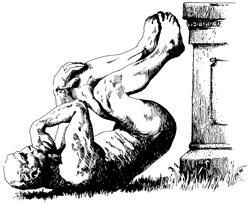 Most of what’s here on the Improbable Research site is real — we supply citations and links so you can see for yourself. Now our reality-based site has been honored as one of the “Top 25 Parody Blogs on the Planet.”
Most of what’s here on the Improbable Research site is real — we supply citations and links so you can see for yourself. Now our reality-based site has been honored as one of the “Top 25 Parody Blogs on the Planet.”
This is perhaps symbolic of the times, in which the new President of the United States constantly makes fictional pronouncements that are reported as if they are factual. Here is the entire list of honored blogs:
Top 25 Parody Websites and Blogs on the Web
http://blog.feedspot.com/parody_blogs/
Congrats Winners!!
Urban Dictionary
Bart Baker
The Key of Awesome
ClickHole
Reductress
Team Four Star (Official)
The Hillywood Show
Rucka Rucka Ali
How It Should Have Ended
Uncyclopedia
Lamebook Fans
Sports Pickle
Improbable Research
NewsBiscuit.com
The Daily Rash
The Business Standard News
The End Times
Newsfox
Hitler Rants Parodies
The Midnight Beast

Preferred Women’s Waist-to-Hip Ratio (Variation over the Last 2,500 Years)

 Researchers Jeanne Bovet, [left] and Michel Raymond [right] of the Institute of the Evolutionary Sciences department, University of Montpellier, France, have been examining pictures of Playboy models and winners of several Miss pageants from 1920 to 2014. They point out that :
Researchers Jeanne Bovet, [left] and Michel Raymond [right] of the Institute of the Evolutionary Sciences department, University of Montpellier, France, have been examining pictures of Playboy models and winners of several Miss pageants from 1920 to 2014. They point out that :
“The ratio between the body circumference at the waist and the hips (or WHR) is a secondary sexual trait that is unique to humans and is well known to influence men’s mate preferences.”
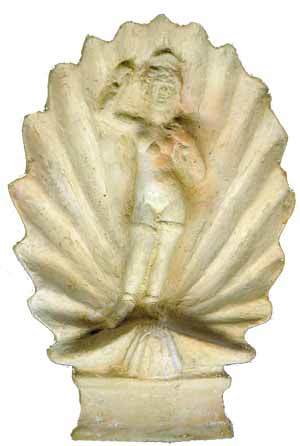 But has this always been so? To make steps towards finding out, the team attempted to peer back 2500 years – first by seeking out and measuring antique artistic depictions, and then …
But has this always been so? To make steps towards finding out, the team attempted to peer back 2500 years – first by seeking out and measuring antique artistic depictions, and then …
“These vestiges of the past feminine ideal were […] compared to more recent symbols of beauty: Playboy models and winners of several Miss pageants from 1920 to 2014. ”
The conclusions :
“In this study, we demonstrated that the WHR of women considered as symbols of beauty did not vary during the antiquity period (500 BCE — 400 CE) and decreased since (at least) the 15th century in western societies. A closer analysis of Playboy models and Miss pageant winners’ measurements from 1920 to 2014 revealed a reduction, or even a reversion, of this WHR decrease. The universality of one preferred WHR is thus challenged, and the evolution of men’s preferences could be linked to demographic, economic, health or social changes in western societies, which are older than the mass media growth of the 20th century.”
See: Preferred Women’s Waist-to-Hip Ratio Variation over the Last 2,500 Years PLoS ONE 10(4): e0123284.
The authors also provide a table which informs, for example, that the statuette Aphrodite of Amisos [shown above] from the late 1st century BC/early 1st century AD (Anon.) features a (corrected) WHR of 0.733.

Marc Abrahams's Blog
- Marc Abrahams's profile
- 14 followers


